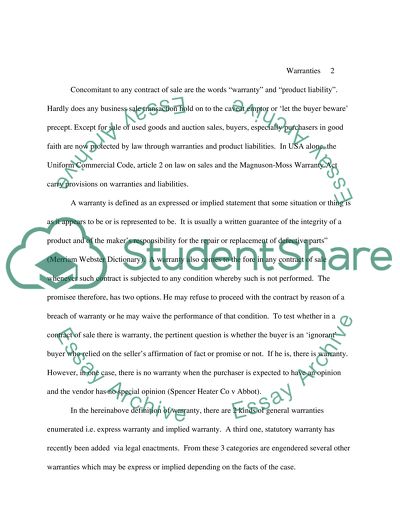Cite this document
(“Warranties and Product Liability Essay Example | Topics and Well Written Essays - 2000 words”, n.d.)
Warranties and Product Liability Essay Example | Topics and Well Written Essays - 2000 words. Retrieved from https://studentshare.org/miscellaneous/1532046-warranties-and-product-liability
Warranties and Product Liability Essay Example | Topics and Well Written Essays - 2000 words. Retrieved from https://studentshare.org/miscellaneous/1532046-warranties-and-product-liability
(Warranties and Product Liability Essay Example | Topics and Well Written Essays - 2000 Words)
Warranties and Product Liability Essay Example | Topics and Well Written Essays - 2000 Words. https://studentshare.org/miscellaneous/1532046-warranties-and-product-liability.
Warranties and Product Liability Essay Example | Topics and Well Written Essays - 2000 Words. https://studentshare.org/miscellaneous/1532046-warranties-and-product-liability.
“Warranties and Product Liability Essay Example | Topics and Well Written Essays - 2000 Words”, n.d. https://studentshare.org/miscellaneous/1532046-warranties-and-product-liability.


